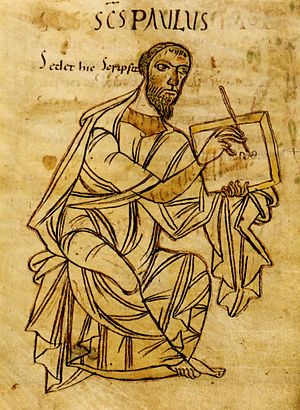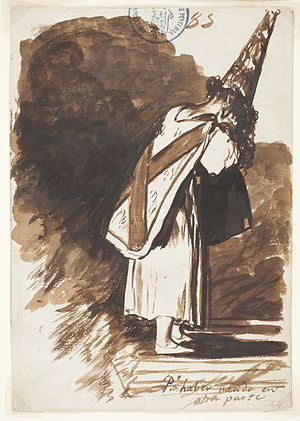The Acts Seminar Report (Acts and Christian Beginnings) maintains that, contrary to the view that has long been widely held among biblical scholars, the author of Acts (with the routine caveats we call him Luke) did know and use the letters of Paul.
 I begin with some comments by one of the Acts Seminar Fellows, Richard Pervo, in his 2006 work, Dating Acts, because thy sum up some of the apparent reasons scholars have traditionally rejected the idea that Luke knew (or used) the letters of Paul.
I begin with some comments by one of the Acts Seminar Fellows, Richard Pervo, in his 2006 work, Dating Acts, because thy sum up some of the apparent reasons scholars have traditionally rejected the idea that Luke knew (or used) the letters of Paul.
[Morton S.] Enslin states that rejection of Paul’s letters as a source for Acts was a result of the reaction against the Tübingen school and claims that this reaction became like its polar opposite, “une sort de these qui n’a pas besoin de demonstration,” [=”A type of thesis that requires no proof”] the “assured result of higher criticism.” (p. 54)
Scholars who have considered Luke to be primarily an historian have argued that he could not have known of the letters
because they would have clarify some issues and correct some errors. (p. 137)
Those who have seen him as a theologian have been able to argue that Luke’s Paul was so different from the Paul of the letters that Luke must have chosen not to use the letters
because they presented a different theology. (p. 137)
Pervo, however, was able to note that a growing appreciation of Luke as an author allows us to acknowledge that as a creative writer Luke was free to use or not use sources as he willed. Scholars have also come to increasingly accept that even as an ancient historian his purposes differed from those of modern historians.
I love Pervo’s conclusion, and I am sure Thomas Brodie (whose latest publication I have been blogging about) would, too:
That is to say that the question can no longer be dismissed by resorting to the shoulds and woulds that posit what Luke would have done and how he should have used Paul. Statements of this nature reveal what their proponents would do, but shed no light upon ancient practices in general or upon Lucan practice in particular. They are egocentric and anachronistic.
Especially painful for some has been the inevitable conclusion that, if Luke knew Pauline letters, he ignored them at some points and contradicted them at others. Why this experience should be more painful than it is with regard to the Gospel of Mark — which Luke also ignored at some points and contradicted more than once — is not perfectly clear, but there can be no doubt it has been a burden.
As Enslin says, “The common denial . . . that Luke knew or used the Pauline letters needs fresh consideration instead of automatic repetition.” As the followers of the Artemis of Ephesus allegedly learned (Acts 19:21-40), constant reiteration of a claim does not make it valid or effective. (pp. 54-55, my formatting and bolding, italics original)
So why would Luke have created such a different Paul from the one found in the letters? And why would he have used the letters to create that different Paul? I’ll return to that question at the end of this post.
It’s time to look at what the Acts Seminar says about the evidence. (It’s brief. I could not hope to cover Richard Pervo’s 100 pages of packed argument and illustrative tables here. I have posted a few detailed arguments, however, coincidentally by another who was a Seminar Fellow, Joseph B. Tyson: How Acts Subverts Galatians; Dating the Book of Acts, 6, late date reconsidered (Paul’s letters).)
Words Taken Out of Paul’s Mouth
Continue reading “Paul’s Letters As Sources for Acts (Acts Seminar Report)”





